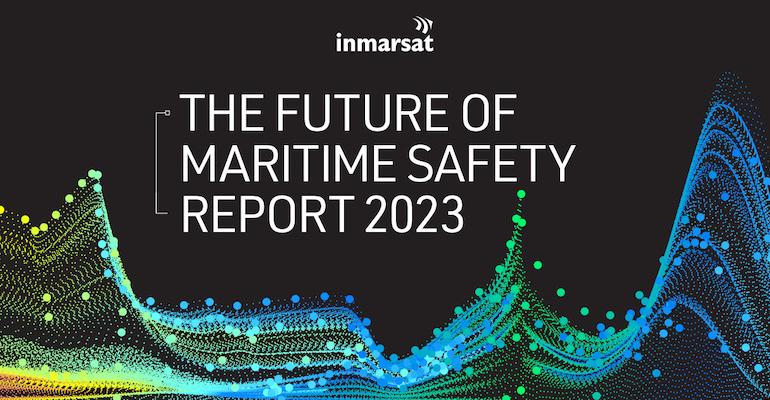Despite a steady decline in total vessel losses in recent decades, incidents at sea remain stubbornly high. As revealed in its 2023 edition of The Future of Maritime Safety Report, Inmarsat received 853 distress calls in 2022, up from 794 in 2021. Over the last four years, distress signals registered on Inmarsat RescueNET average 810 per year. Elsewhere, Lloyd’s List Intelligence data reveals that casualty reports numbered 700 in the third quarter of 2022 – the highest quarterly total since 2008. Again, the Allianz Global Corporate and Speciality Safety and Shipping Review 2023 notes a slight increase in vessel casualties in 2022, the most common causes of which were recurring issues like machinery damage, collision, fire and explosion, and grounding.
Even as shipping contends with persistent, familiar tests, its accelerating digital and green transformation poses entirely new challenges – particularly surrounding the introduction of novel technology and alternative fuels. Yet according to Peter Broadhurst, Senior Vice President, Safety and Regulatory, Inmarsat Maritime, these challenges come with an opportunity: “As data in [The Future of Maritime Safety] Inmarsat report shows, we see the same safety incidents repeated time and again, year after year. While the rapid changes ahead pose challenges, they also afford us a great opportunity: to not simply try to maintain levels of safety, but to improve them.”
To this end, Broadhurst added, the industry must address the existing deficiencies that hinder meaningful progress. “Often, the default outcome of a marine accident investigation is to assert the need for more or better training,” he said. “Of course, this is frequently a contributing factor, but training is expensive and time-consuming and regularly has to be squeezed into already-busy routines. It also points the finger of blame at our seafarers, placing too much onus on human error. Such an approach does little to prevent similar events from recurring as it fails to address underlying safety-culture shortcomings.”
As Ksenia Zakariyya, HSEQ Manager, Yara Clean Ammonia, noted at the 2023 Inmarsat Proactive Safety Roundtable – Human Element Focus, “Over 70% of all incidents reported are based on human factors. What is causing the human-error statistic to be so high in the maritime industry? We need to route it back to the cause.”
Probable factors behind the elevated risk of safety incidents attributable to human error include poor living and working conditions, separation from families, and unfair employment practices – issues that were exacerbated by the recent pandemic. Although the Covid-19 risk has since markedly reduced, and the resumption of crew changes has helped to mitigate the insidious impact of fatigue, the ramifications of the global health crisis are still being felt across shipping.
For example, the restricted access to seafarer training during the height of the pandemic likely contributed to the current shortage of trained personnel, which has in turn amplified concerns regarding overwork. While the crewing situation is already serious, it will soon become critical as companies compete for talent among the small pool of crew able to safely handle and operate vessels transporting and/or powered by alternative – and higher risk – fuels.
Amplifying the voice of seafarers
In compiling The Future of Maritime Safety Report, Inmarsat invited crew to provide their views on how to improve vessel safety. The seafarers interviewed agreed that access to regular, high-quality training alongside frequent safety drills would ensure competency levels were maintained and onboard risks reduced. Fundamental safety considerations were also a common theme among the interviewees, who highlighted the need for appropriate PPE, proper rest hours, and manageable shift patterns. Some also noted a requirement for more crew members on board ships.
In many cases, the seafarers’ recommendations amounted to a call for leaders to focus on the basics, including regular reviews and updates to safety protocols. Second officer Pankaj Manglani pointed out that those in charge must “strictly follow” codes and conventions, implement and execute risk assessments, ensure good health and hygiene on board, promote and practise a strong safety-reporting culture, encourage teamwork, and “be aware of and eliminate non-conformities”.
Meanwhile, fourth engineer Bachala Shanker Rao called for leaders to build and maintain a strong safety culture to reduce incidents at sea. “Create an environment where safety is a top priority and everyone is responsible for making the workplace safe, encouraging a culture of open communication,” he advised. “Embracing advanced technology (automation) will reduce human error and remote monitoring systems to track the vessel conditions.”
The interconnection between regulation, human element and technology needs to be front and centre to proactively address safety challenges as shipping transitions to alternative fuels, adopts decarbonisation technologies, and continues to digitalise. Considering the challenges that this transformation presents, and the requirement to retrain seafarers on complex new systems and procedures, the industry would do well to listen to its workforce and implement changes based on their concerns.

